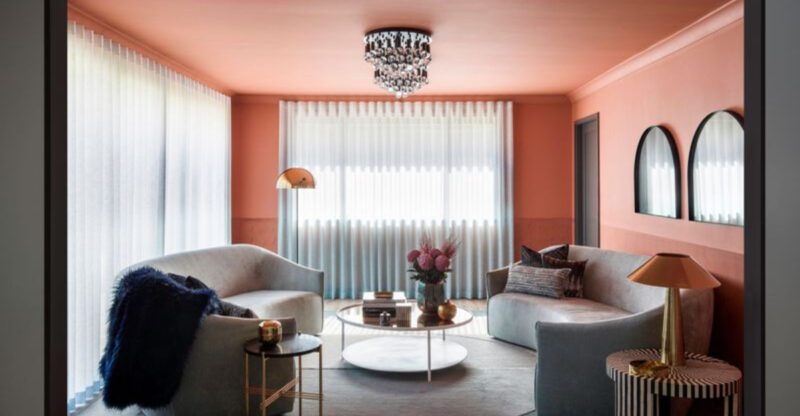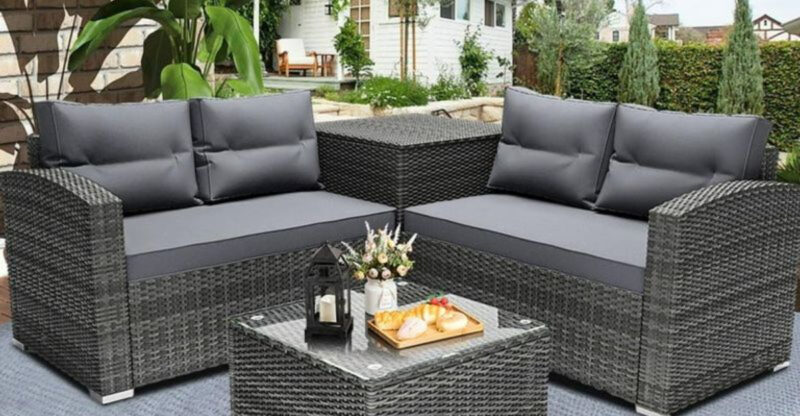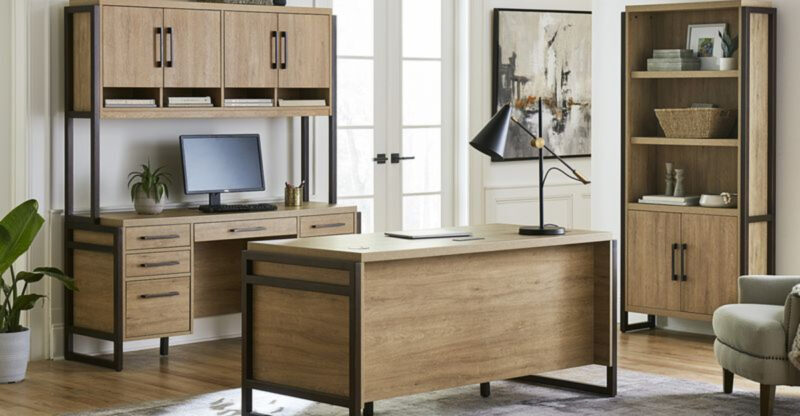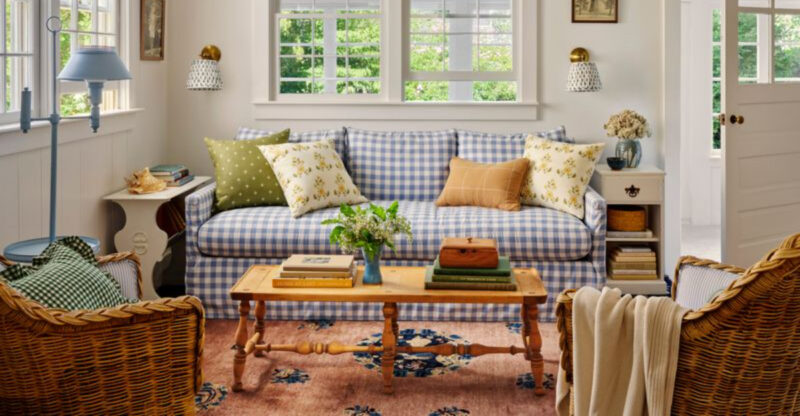These Are The 16 Most Versatile Kitchen Cabinet Styles, Say Interior Designers
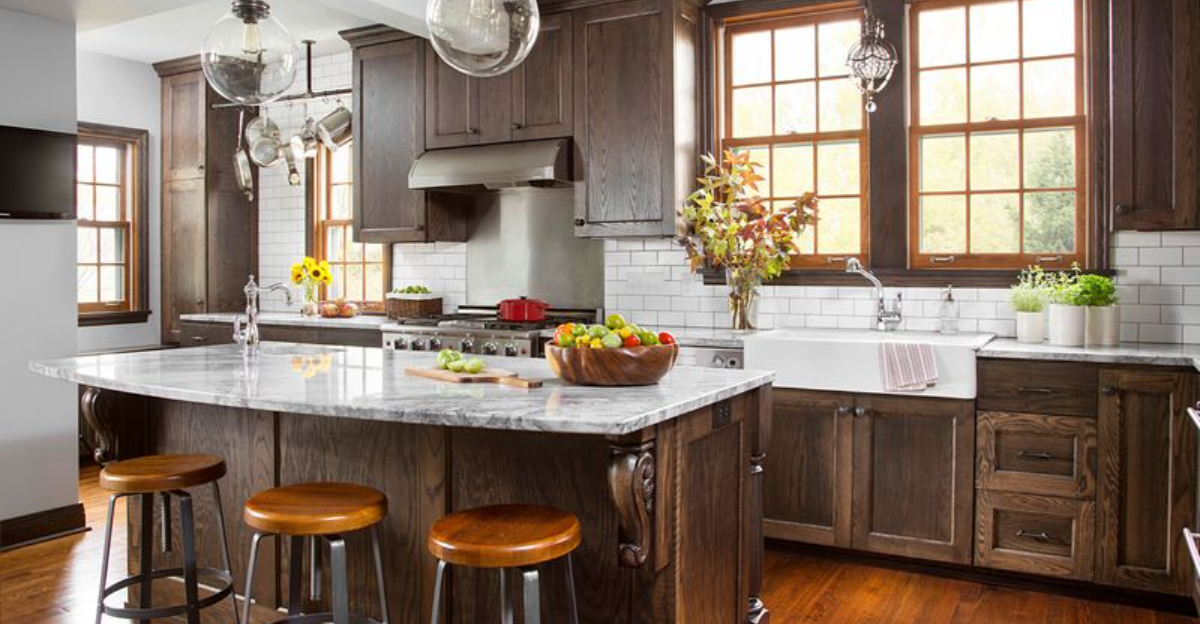
Choosing kitchen cabinets might seem straightforward, but the style you select dramatically impacts your kitchen’s overall look and functionality.
Interior designers consistently recommend certain cabinet styles that stand the test of time while offering flexibility for different design schemes.
Whether you’re planning a complete kitchen renovation or just a refresh, these versatile cabinet styles provide the perfect balance of form and function.
1. Shaker Style Cabinets
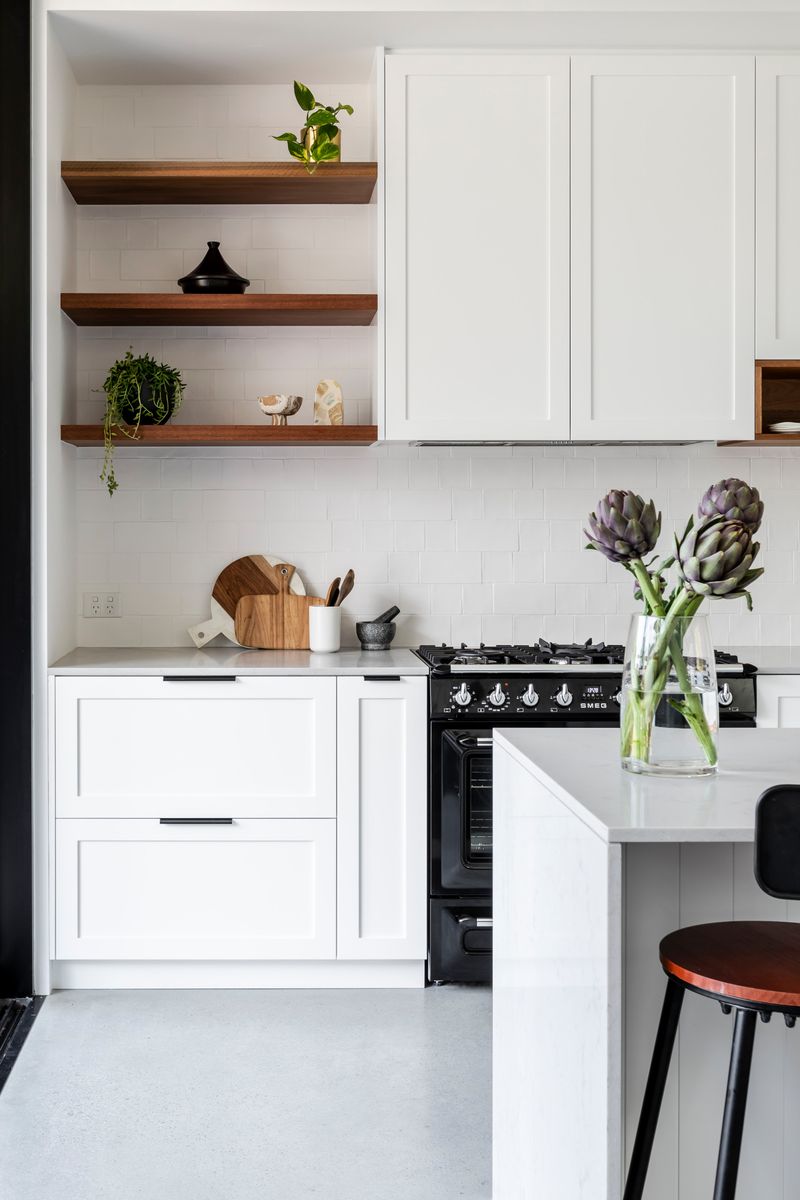
Simplicity reigns supreme with Shaker cabinets, featuring a five-piece door with a recessed center panel. Their clean lines and understated elegance make them the chameleons of kitchen design – equally at home in farmhouse kitchens or modern spaces.
Many designers consider Shakers the most adaptable style available, as they pair beautifully with virtually any countertop material or hardware finish. The straightforward construction also makes them more affordable than ornate alternatives.
While traditionally crafted from maple or cherry wood, today’s Shaker cabinets come in countless painted finishes, with white, gray, and navy being particularly popular choices for homeowners seeking timeless appeal with contemporary flair.
2. Flat-Panel (Slab) Cabinets
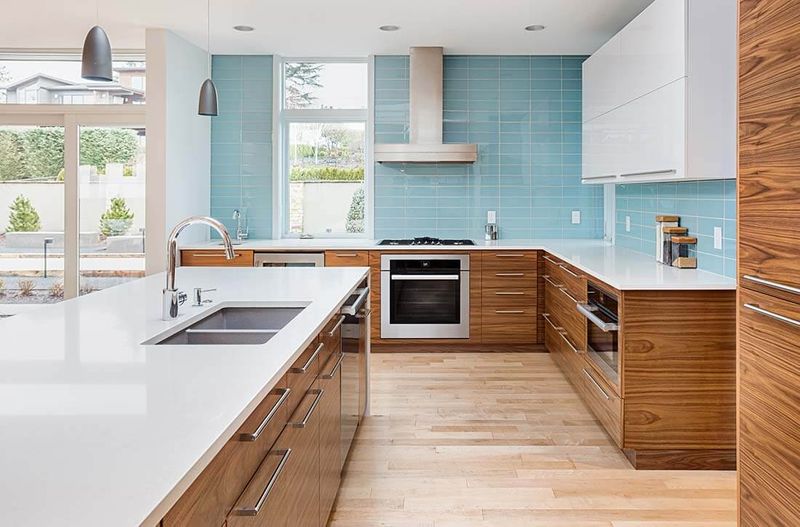
Sleek and minimalist, flat-panel cabinets feature smooth, handleless surfaces that create a streamlined look perfect for contemporary kitchens. Their uncluttered appearance makes small spaces feel larger and complements open-concept living beautifully.
Materials range from natural wood to high-quality laminates and lacquered finishes, offering tremendous versatility at various price points. Designers love how these cabinets create a blank canvas for statement lighting, distinctive backsplashes, or dramatic countertops to shine.
Maintenance couldn’t be simpler – without grooves or panels to collect dust and grease, a quick wipe-down keeps these cabinets looking pristine. For homeowners who appreciate clean lines and unfussy design, slab cabinets deliver sophisticated simplicity.
3. Beadboard Cabinets
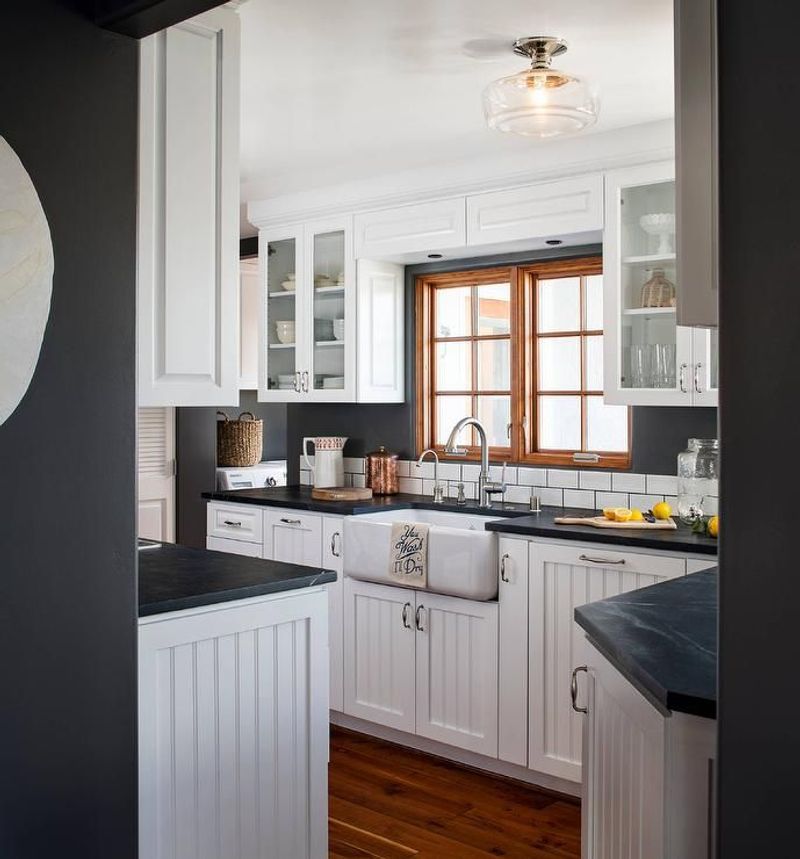
Charming vertical grooves give beadboard cabinets their distinctive cottage appeal. This style brings instant warmth and texture to kitchens without overwhelming the space or feeling too rustic.
Though traditionally associated with country design, designers increasingly incorporate beadboard into transitional and even modern kitchens for unexpected visual interest. The vertical lines can make ceilings appear higher, creating an illusion of space in compact kitchens.
When painted crisp white, beadboard cabinets feel fresh and timeless, while darker hues like navy or forest green create dramatic contrast. This versatile style pairs beautifully with natural stone countertops, vintage-inspired hardware, and both painted or stained wood finishes for the remaining cabinetry.
4. Glass-Front Cabinets
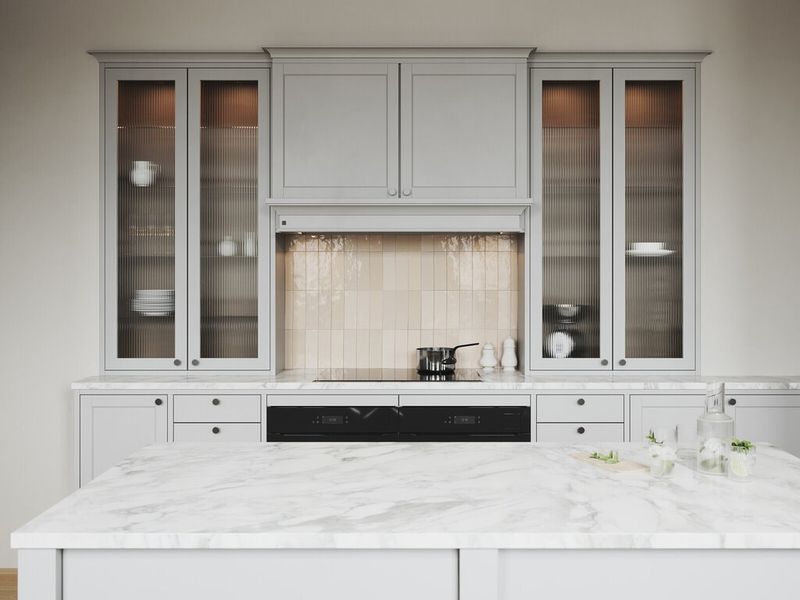
Glass-front cabinets bring airiness to kitchens while providing the perfect showcase for beautiful dishware or collectibles. Designers strategically place these cabinets as focal points rather than using them throughout the entire kitchen.
Various glass options expand their versatility clear glass creates openness, while seeded, frosted, or ribbed glass provides display space while discreetly hiding cabinet contents. LED lighting installed inside elevates the entire kitchen’s ambiance while highlighting special pieces. Mixing glass-front uppers with solid lower cabinets creates visual balance and practical storage.
This combination works beautifully in nearly any kitchen style from traditional to ultra-modern, making glass-front cabinets one of the most adaptable accent options available to homeowners seeking both function and display space.
5. Louvered Cabinets
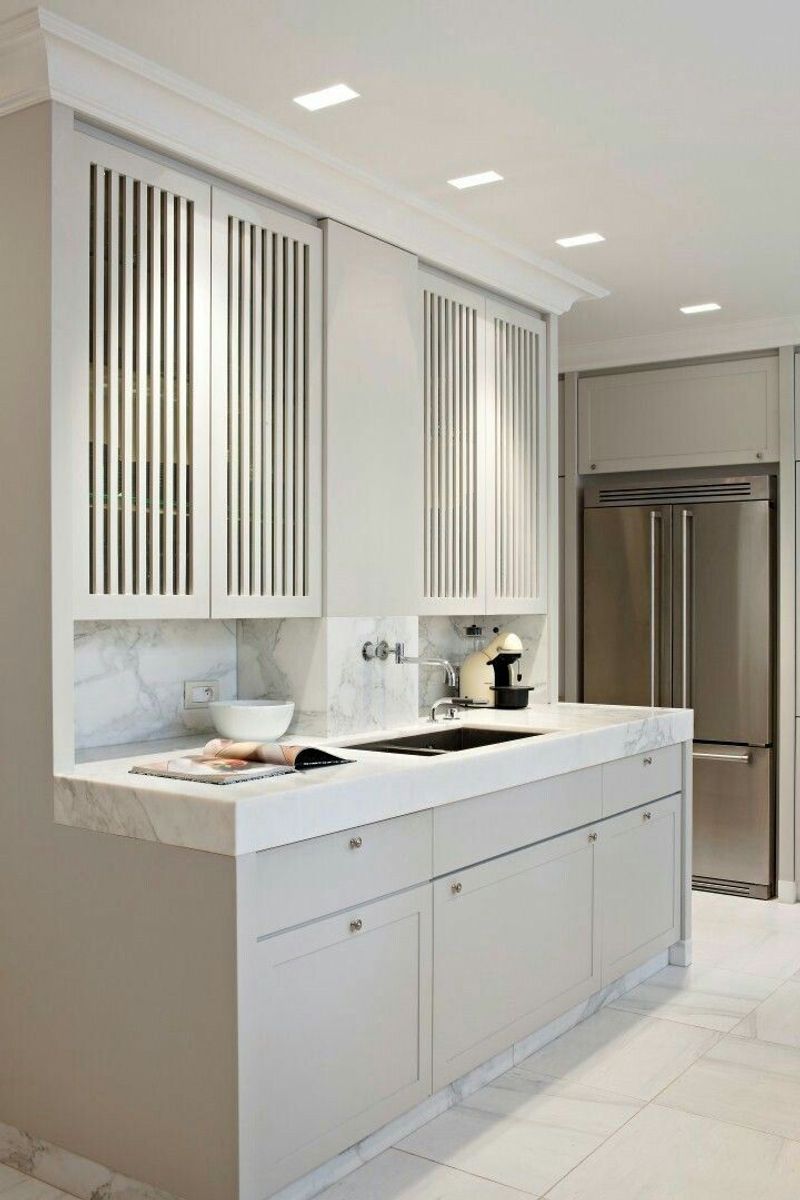
Horizontal slats give louvered cabinets their distinctive, breezy appearance that instantly evokes coastal living. Beyond their good looks, these cabinets serve practical purposes – the slats provide ventilation, making them ideal for areas that might trap moisture or heat.
Designers recommend louvered styles for pantries, appliance garages, or cabinets housing electronics that need airflow. While traditionally associated with beach houses, modern interpretations work surprisingly well in urban settings when paired with contemporary materials and hardware.
Though requiring slightly more dusting than solid-front cabinets, their unique texture adds architectural interest that flat surfaces can’t match. White louvered cabinets create a classic Hamptons vibe, while black or navy versions offer dramatic contrast in neutral kitchens.
6. Inset Cabinet Doors
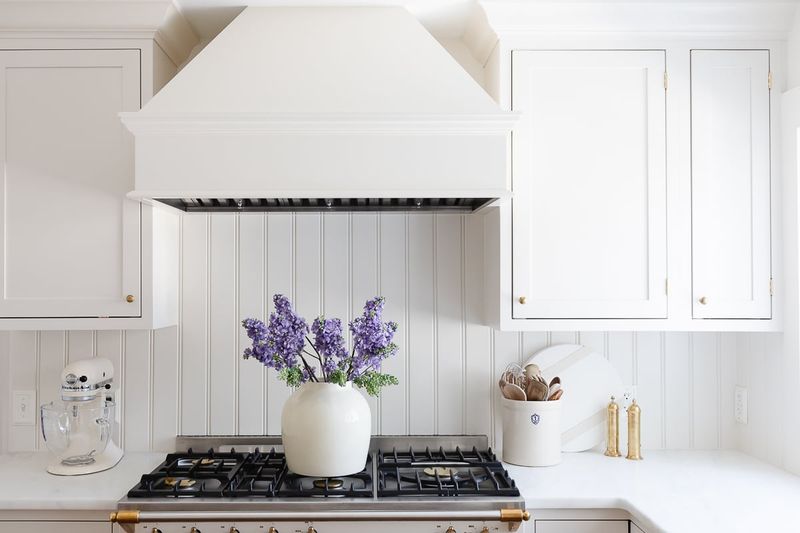
Precision craftsmanship defines inset cabinets, where doors sit flush with the frame rather than overlaying it. This meticulous construction creates clean lines and architectural detail that instantly elevates any kitchen’s appearance.
Though typically more expensive than overlay options, designers praise inset cabinets for their timeless appeal and furniture-like quality. The style works beautifully in traditional, transitional, and even modern farmhouse kitchens. Hardware becomes particularly important with inset cabinets, as knobs or pulls are essential for opening doors that lack the finger space of overlay styles.
Homeowners appreciate how inset cabinets maintain their tailored appearance over time, with doors that won’t sag or misalign. Their crisp, defined edges create subtle shadow lines that add visual depth to kitchens without overwhelming the space.
7. Raised Panel Cabinets
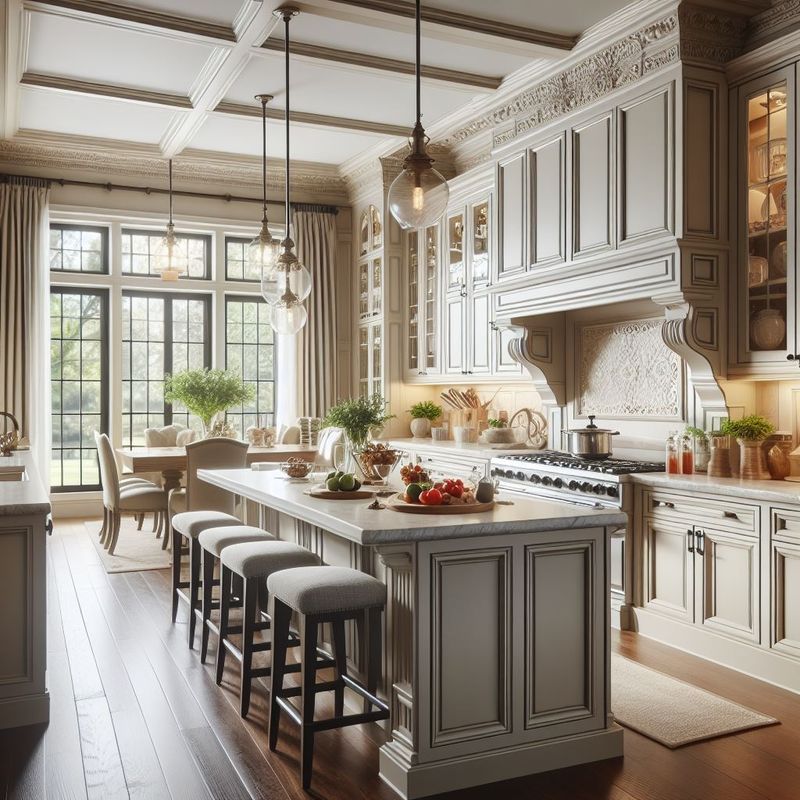
Dimensional elegance characterizes raised panel cabinets, where the center panel rises above the surrounding door frame. This classic style brings architectural interest and traditional sophistication to kitchens without feeling stuffy or dated.
When crafted from rich wood tones like cherry or mahogany, raised panels exude formal luxury. However, designers increasingly apply crisp white or soft gray paints to these cabinets, creating a fresh interpretation that works beautifully in updated traditional or transitional homes. The dimensional quality of raised panels creates natural light and shadow play that adds visual warmth to kitchens.
While more ornate than some alternatives, their enduring appeal and ability to bridge classic and contemporary design makes them surprisingly versatile for homeowners seeking timeless quality with distinctive character.
8. Open Shelving Cabinets
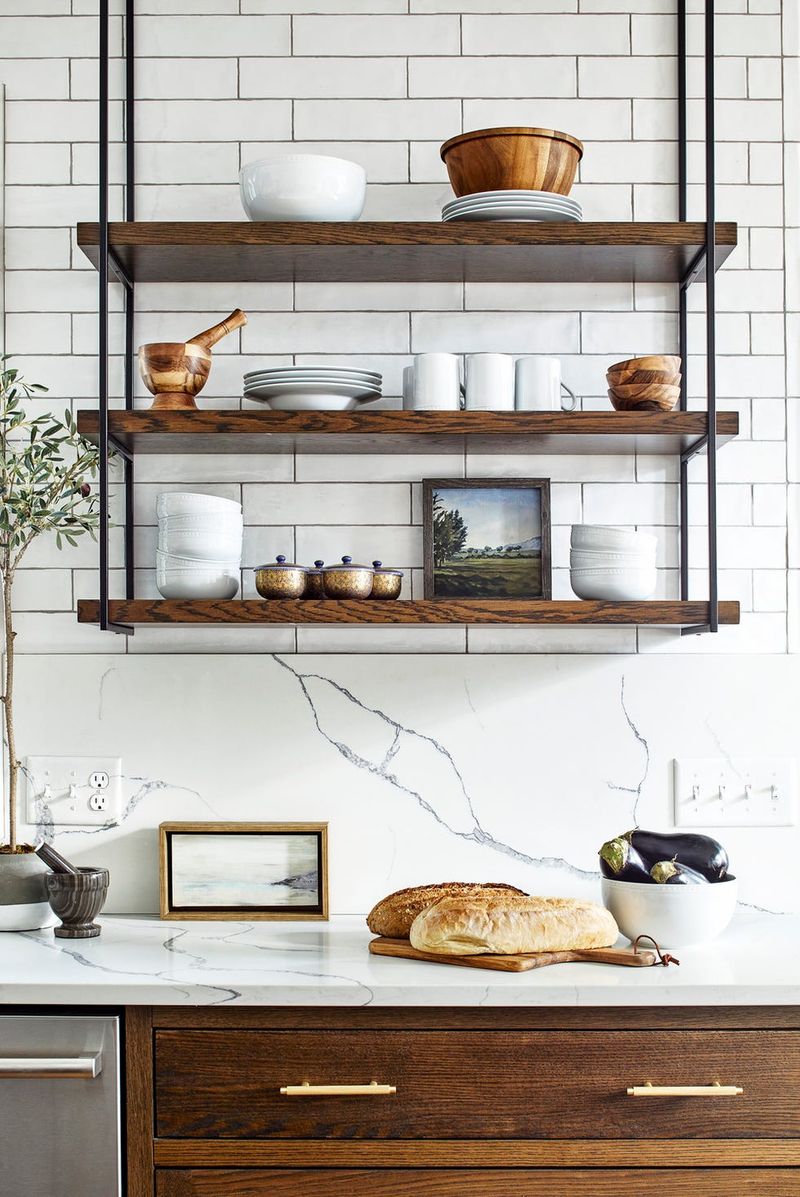
Airy and accessible, open shelving continues gaining popularity for its ability to make kitchens feel larger and more inviting. Designers often recommend mixing open shelves with traditional cabinets rather than eliminating doors entirely.
Materials range from reclaimed wood for rustic warmth to sleek floating glass for contemporary spaces. The beauty of open shelving lies in its versatility it works equally well in farmhouse kitchens displaying vintage crockery or minimalist spaces showcasing curated dishware collections. Beyond aesthetics, open shelving encourages thoughtful organization and regular decluttering.
Items remain easily accessible for frequent use, though this style works best for homeowners comfortable with keeping things tidy. Strategic placement near sinks or stoves allows for grabbing everyday essentials without opening cabinet doors.
9. Recessed Panel Cabinets
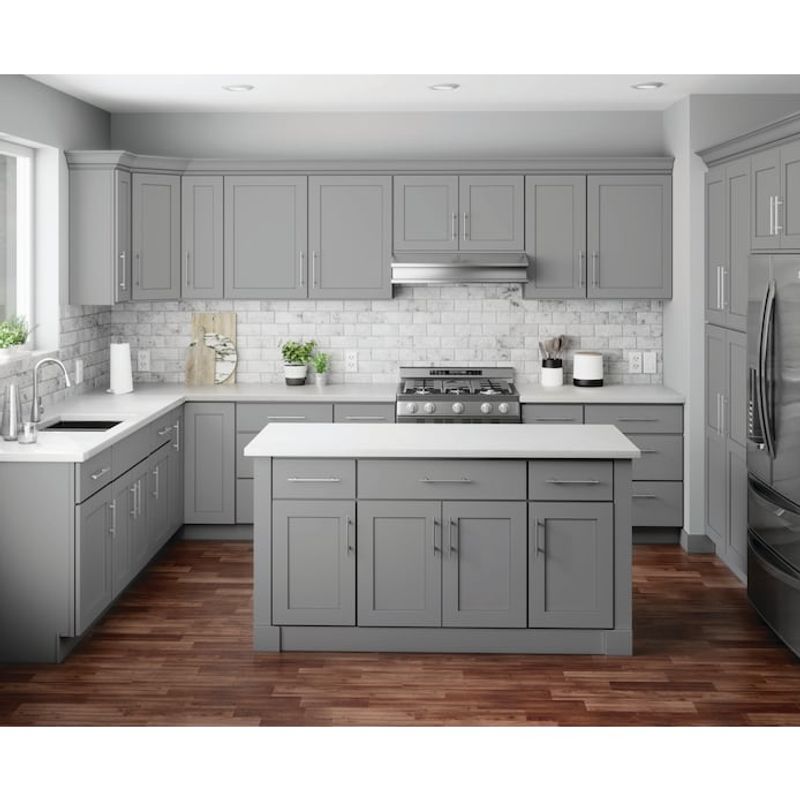
Subtle sophistication defines recessed panel cabinets, where the center panel sits lower than the surrounding frame. This dimensional detail creates visual interest without the formality of raised panels, making them extraordinarily adaptable across design styles.
Designers appreciate how recessed panels bring architectural character while maintaining clean lines. The style bridges traditional and contemporary aesthetics beautifully, especially when paired with streamlined hardware. Light plays beautifully across these cabinets, creating subtle shadows that add depth without overwhelming the space.
Homeowners find these cabinets particularly forgiving in busy kitchens the recessed design helps camouflage fingerprints and minor wear that would be obvious on flat surfaces. Whether painted crisp white for coastal charm or finished in rich walnut for modern sophistication, recessed panels deliver timeless appeal with design flexibility.
10. Rustic Wood Cabinets
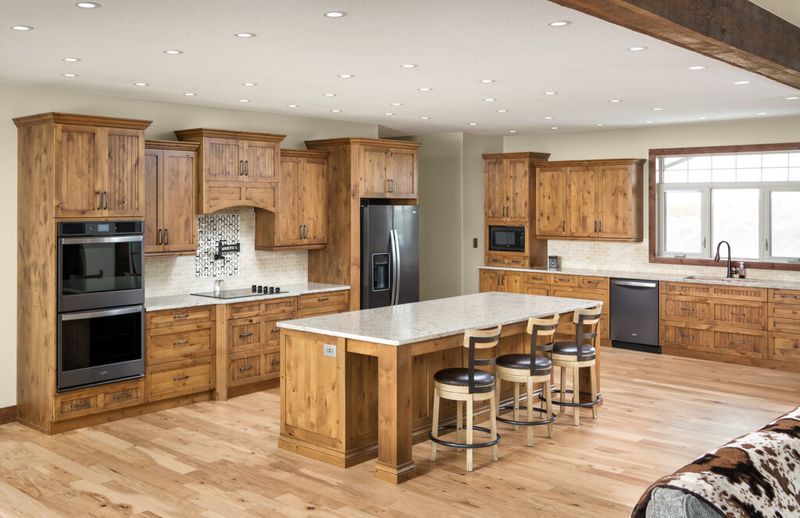
Natural character shines through rustic wood cabinets, where knots, grain patterns, and occasional imperfections become celebrated design features. Reclaimed barn wood, knotty alder, and distressed oak are popular choices that bring instant warmth and organic texture to kitchens.
Designers increasingly pair rustic wood with sleek contemporary elements think weathered cabinets with quartz countertops or modern appliances creating compelling textural contrasts. This juxtaposition works particularly well in mountain homes, renovated lofts, or anywhere seeking to balance modern convenience with natural warmth.
Though traditionally associated with cabin or farmhouse aesthetics, today’s rustic cabinets adapt beautifully to urban environments when thoughtfully incorporated. Their inherent visual interest allows other kitchen elements to remain simple, creating balance in spaces that might otherwise feel too polished or sterile.
11. Two-Tone Cabinetry
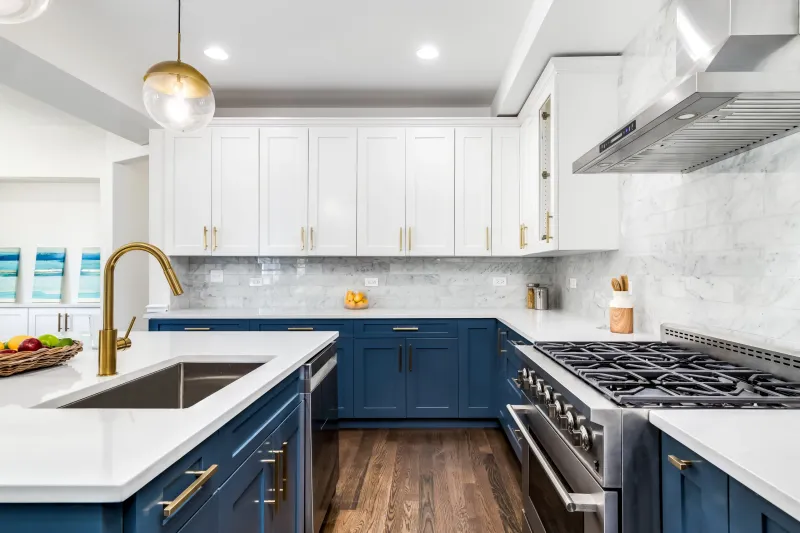
Dynamic visual interest defines two-tone cabinetry, where upper and lower cabinets feature different colors or materials. This approach allows homeowners to incorporate multiple design elements without overwhelming the space.
Designers frequently recommend darker colors for base cabinets with lighter shades above, creating a grounded feeling while keeping the kitchen bright. The island often becomes a focal point in two-tone kitchens, featuring a bold color or distinctive wood tone that complements the perimeter cabinetry. Beyond aesthetics, two-tone cabinetry offers practical benefits lighter upper cabinets make small kitchens feel larger and more open, while darker lower cabinets hide scuffs and wear in high-traffic areas.
This versatile approach works across design styles from traditional to ultra-modern, making it an increasingly popular choice for homeowners seeking personalized kitchen design.
12. High-Gloss Modern Cabinets
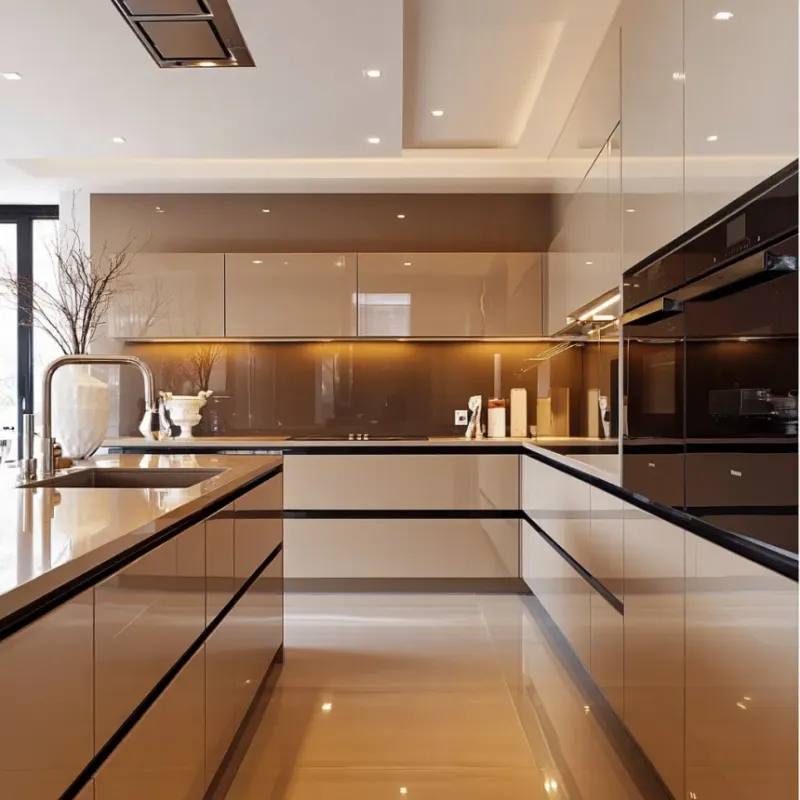
Light-reflecting brilliance characterizes high-gloss cabinets, creating dramatic visual impact in contemporary kitchens. Their mirror-like finish bounces light around the room, making smaller spaces feel larger and more open.
Available in virtually any color from crisp white to bold jewel tones, these cabinets offer tremendous design flexibility. Designers often recommend pairing high-gloss doors with matte countertops and backsplashes to balance the reflective surfaces and prevent overwhelming shine. Fingerprint resistance has improved dramatically with newer finishes, addressing previous maintenance concerns.
For homeowners seeking sleek, European-inspired kitchens with clean lines and minimal ornamentation, high-gloss cabinets deliver sophisticated urban style. Their smooth surfaces also make them exceptionally easy to wipe clean a practical benefit for busy households.
13. Distressed Finish Cabinets
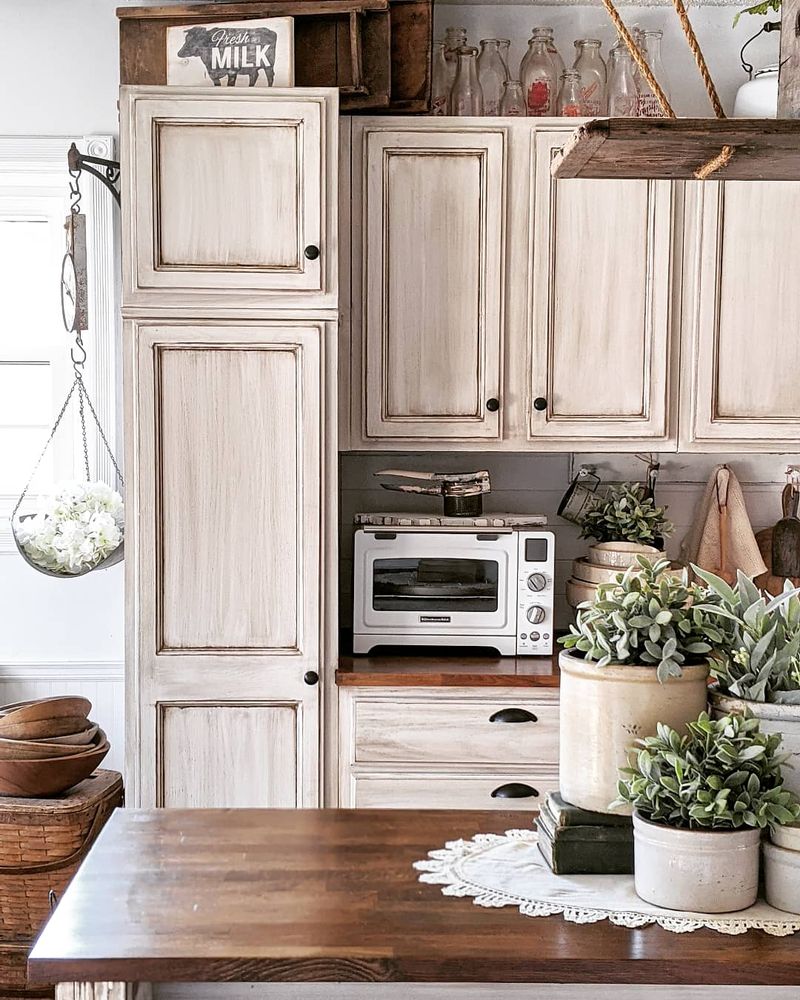
Character and history emanate from distressed finish cabinets, where intentional wear marks, rubbed edges, and antiqued patinas create lived-in charm. This technique transforms even newly built cabinets into pieces that feel like they’ve been in the family for generations.
Designers apply distressing techniques to various cabinet styles from traditional raised panel to simple Shaker expanding their versatility across design aesthetics. The beauty of distressed finishes lies in their forgiving nature; additional dings or scratches from daily life simply add to their character rather than detracting from perfection.
While heavily distressed cabinets work beautifully in farmhouse or rustic settings, subtle distressing can add unexpected depth to transitional or even modern spaces. Homeowners appreciate how these finishes hide everyday wear while creating instant personality in new construction that might otherwise feel lacking in history.
14. Minimalist Handleless Cabinets
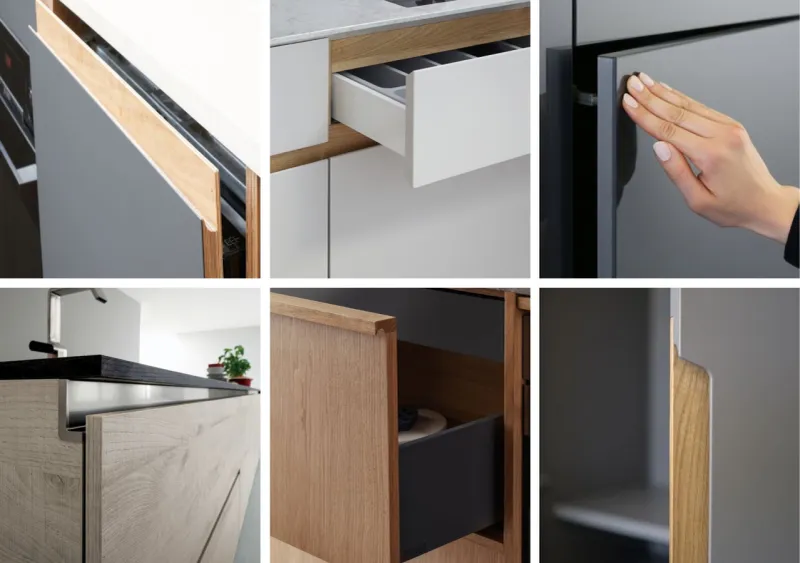
Pure simplicity defines handleless cabinets, where push-to-open mechanisms or recessed finger pulls replace traditional hardware. This streamlined approach creates uninterrupted clean lines that epitomize modern design while eliminating protrusions that can catch clothing in busy kitchens.
Though commonly associated with contemporary aesthetics, designers increasingly incorporate handleless cabinets into transitional spaces for their sleek, uncluttered appearance. Special touch-latch systems make opening and closing effortless, while soft-close features prevent slamming.
Beyond their visual appeal, handleless cabinets offer practical advantages they’re easier to clean without hardware collecting dust and grime, and they create a safer environment for households with young children. Available in materials from high-gloss lacquer to natural wood, these cabinets provide versatile design options for homeowners seeking sophisticated minimalism.
15. Traditional Overlay Cabinets
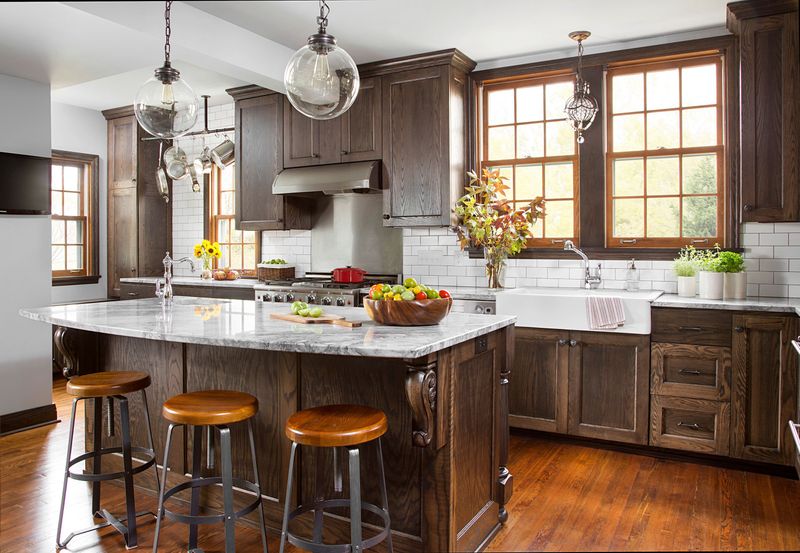
Timeless reliability characterizes traditional overlay cabinets, where doors partially cover the cabinet frame, creating classic shadow lines. This construction style has endured for generations because it balances visual interest with practical functionality.
Designers appreciate how traditional overlay cabinets work harmoniously with various door styles – from simple recessed panels to more ornate designs. Hardware becomes particularly important with these cabinets, as knobs and pulls can dramatically shift their appearance from traditional to transitional or even contemporary.
Homeowners benefit from the cost-effectiveness of standard overlay construction compared to more specialized techniques like inset cabinetry. While less distinctive than some alternatives, their versatility makes them perfect for those seeking enduring appeal without committing to a highly specific design aesthetic that might feel dated in coming years.
16. Transitional Style Cabinets

Perfect balance defines transitional cabinets, which blend traditional elements with contemporary clean lines. This hybrid approach typically features door styles with subtle detailing – not as ornate as traditional cabinets but more detailed than minimalist modern options.
Designers recommend transitional cabinets for homeowners who appreciate timeless design but want to avoid anything too trendy or overly traditional. These versatile cabinets adapt beautifully to changing decorative elements, making them ideal for those who enjoy refreshing their kitchen’s look without major renovations.
Neutral color palettes dominate transitional cabinet designs, with whites, grays, and soft blues creating serene backdrops for more expressive countertops or backsplashes. Their adaptable nature makes transitional cabinets particularly valuable in open-concept homes, where kitchens need to harmonize with adjacent living spaces.

